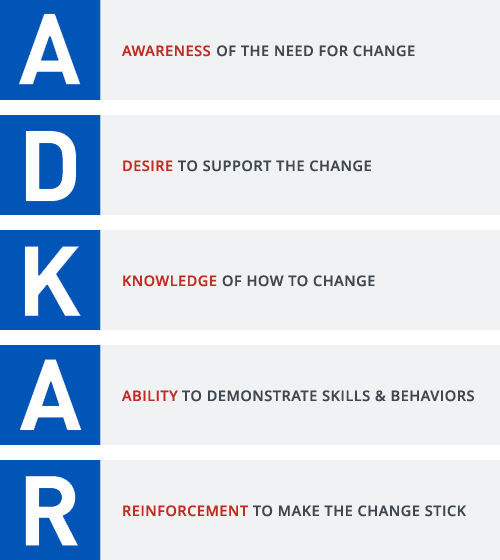What is Change Management?
Change Management requires communications, but is its own discipline
Change management is the process, tools, and techniques used to manage the people side of change to achieve a desired business outcome. It incorporates the organizational tools that can be utilized to help individuals make successful personal transitions that result in the adoption and realization of change.
For example, the business may say it needs to become more competitive, closer to the customer, or more efficient, but at some point these goals must be transformed into the specific impacts on processes, systems, organization structures, and/or job roles. This is the process of defining change and identifying the individuals it will directly affect, as well as helping them through the transition.
What is Communications’ role in change?
In the VPFO change management is led by Human Resources and supported by Communications and others. Human Resources and Communications are certified in the Prosci Change Management model. The PROSCI model is just one of many approaches to change management and is often supplemented by other disciplines or approaches. The Prosci model is summarized in the acronym ADKAR, which maps out an individual person’s change journey:

Many disciplines, such as communications, training, management, coaching, etc., can be used as part of any of these steps, although Prosci suggests most communications efforts live in the awareness-building part of the model.
Featured Resources
Website and toolkits
UBC HR Organizational Change and Transition
UBC Human Resources Organizational Change and Transition team offers has a number of resources during times of organizational change (UBC CWL required)
Website
Prosci website
The VPFO, led by VPFO Human Resources, uses Prosci’s change management model. HR and Communications & Engagement staff are PROSCI certified.
Did you find what you were looking for?
Thanks for your response! If you'd like to share further feedback, please take our survey.
Didn’t find what you were looking for? We’d like to hear from you! Share your thoughts by taking our survey.